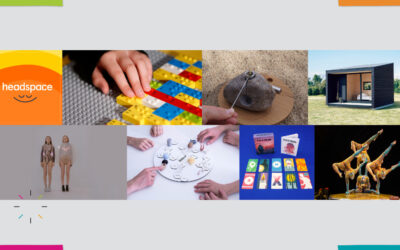Have you ever wondered what makes certain people succeed in their work as designers? Is it a matter of natural talent, acquired knowledge, or perhaps specific professional predispositions? The work of a designer, regardless of specialization – whether UX, graphics, or industrial design – requires not only technical skills but also particular personality traits, ways of thinking, and approaches to work.
Quick Links
- What are professional predispositions?
- What predispositions should a UX designer have?
- How to check and develop professional predispositions?
What are professional predispositions?
Professional predispositions are a set of traits and skills that determine an individual’s tendency and ability to perform a specific type of work. They include both natural abilities and talents, as well as acquired skills and personality traits. For example, a person predisposed to work in the field of science may have an analytical mind, logical thinking ability, and curiosity. In contrast, a person predisposed to artistic work may exhibit creativity, an appreciation for aesthetics, and the ability to express emotions through art. Traits such as patience, the ability to work under pressure, teamwork skills, or independence can also be important for various professions. It is important to understand that professional predispositions can be developed and shaped through learning and professional experience.
What predispositions should a UX designer have?
UX Designer is a profession that requires not only technical skills but also a specific attitude and approach to work. Through the Design Mindset Detector predisposition test, key predispositions that a UX Designer should have can be identified.
The first is the ability to build deep relationships with others, understand their needs, and collaborate effectively. This means empathy, recognizing the value of diversity, and focusing on people.
Another important element is constant curiosity, enthusiasm, and readiness to act. A UX Designer should be able to look at challenges from a broad perspective, be inquisitive, and open to new information that may arise while working on a project. The ability to quickly transition from planning to execution is also important.
A UX Designer should also show courage in initiating and creating innovative solutions. This means striving to discover new, unconventional solutions, creating value despite incomplete information, and being able to work on multiple concepts simultaneously, with a vision of the final, complete solution.
Lastly, but not least, is determination to achieve goals, even in the face of risk. This means a willingness to continually learn, mainly through action and experience, even from mistakes. The need to influence the environment, perseverance in overcoming obstacles, readiness to change approach, and reframe problems, always with the best possible solution in mind, is also important.
How to check and develop professional predispositions?
Checking and developing professional predispositions is a key element in career planning and development. This can be done through various methods such as psychometric tests, mentoring, coaching, or training. Tools like the Design Mindset Detector can help identify individual predispositions for using the Design Thinking approach, which is crucial in many modern professions, including UX Designer. After completing the test, you will receive a detailed report discussing your
predispositions, helping you understand your strengths and areas you can further develop. Additionally, you can take advantage of a mentoring session that will help you understand how to develop your skills in practice. Remember that developing professional predispositions is a continuous process that requires commitment, curiosity, and a willingness to learn.
Want to check your predispositions for working with Design Thinking and Service Design? Check out our test! – Design Mindset Detector™.





